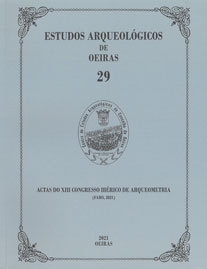Exploración geofísica GPR en dos iglesias renacentistas andaluzas: San Sebastián de Puerto Real (Cádiz) y San Sebastián de Estepa (Sevilla)
Palavras-chave:
history, renaissance churches, GPR geophysics, remote sensors, crypts and burialsResumo
The aims of the present work is to inform in two GPR geophysical surveys carried out in the subsoil of two Andalusian Renaissance churches with a bifrequency georradar GPR equipment, which have allowed to determine the existence of events possibly associated to the Christian burial world and modern/contemporary modifications. The detection in both churches of elements such as crypts and individual burials, as well as their disposition and location within the priority spaces of the period, confirm the effectiveness of the application of non‑invasive research techniques in the study of the building substrate in this type of construction. The work has also managed to identify possible structural reinforcements of pillars, extension works and/or modifications possibly undertaken in modern times, all of which are underground.
The results of the geophysics of both cases allow us to conclude that there are multiple constructive similarities following their chronological parity and with the transformations that are carried out in the churches in modern times, a product of the customs and rites of the Christian world and the policies of rationalization of space.
At the same time, the research has allowed a significant improvement in the establishment of the methodology for obtaining GPR data inside religious buildings, with the use of relative georeference systems and other auxiliary means. Consequently, the optimal performances, the appropriate GPR data densities for the correct obtaining of results and the advantages of the use of a bifrequency GPR system 200 MHz ‑ 600 MHz are defined.
Downloads
Publicado
Como Citar
Edição
Secção
Licença
Os artigos publicados são da exclusiva responsabilidade dos Autores.
É expressamente proibida a reprodução de quaisquer imagens sobre as quais
existam direitos de autor sem o prévio consentimento dos signatários dos artigos
respectivos.




